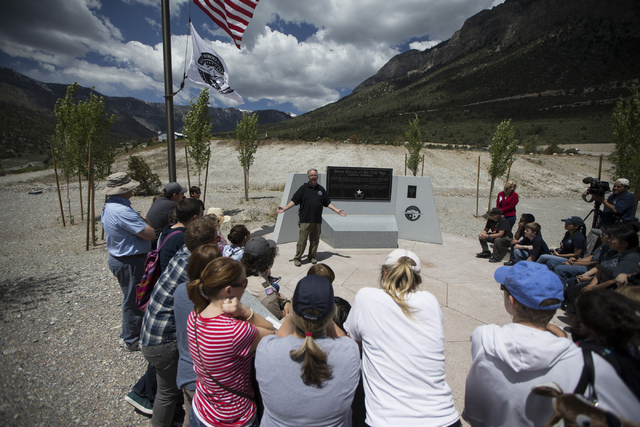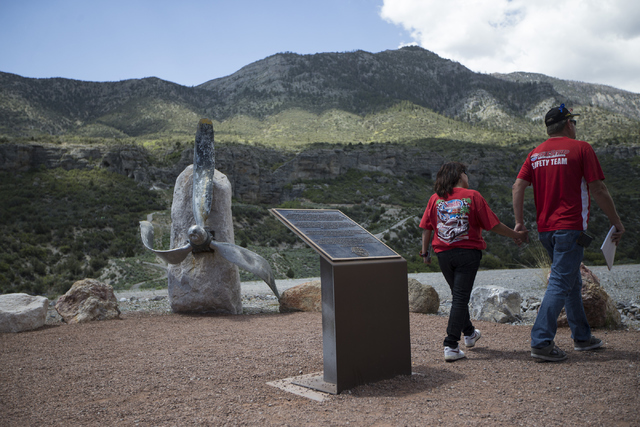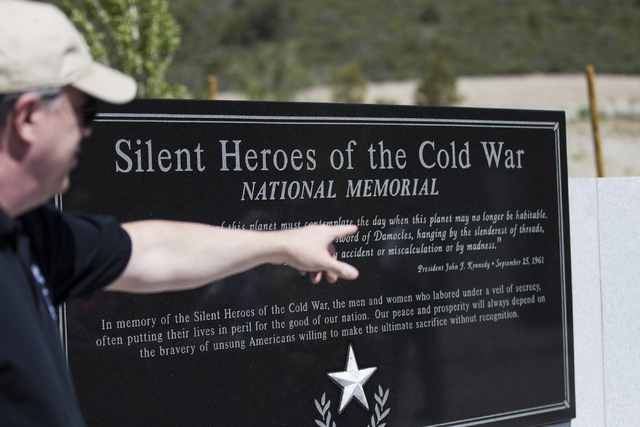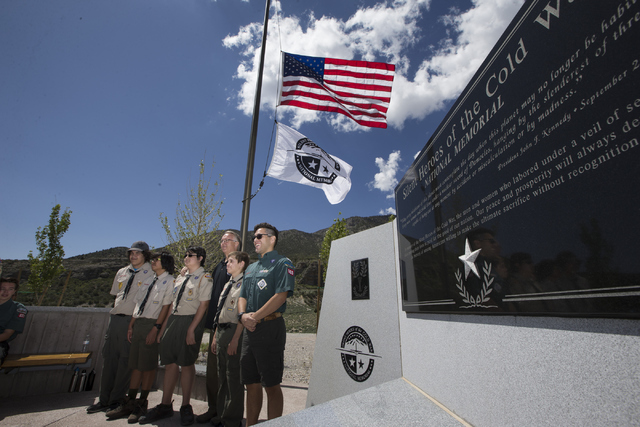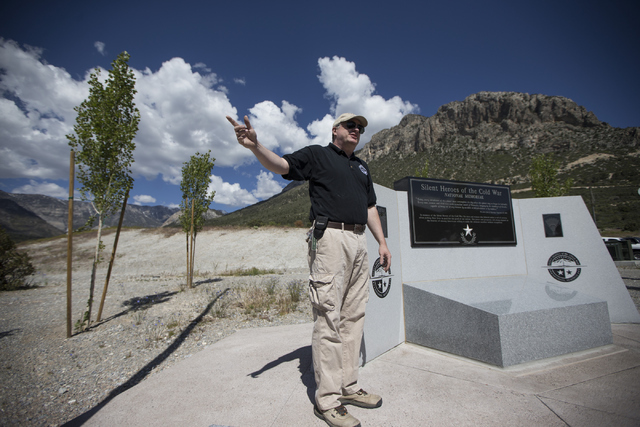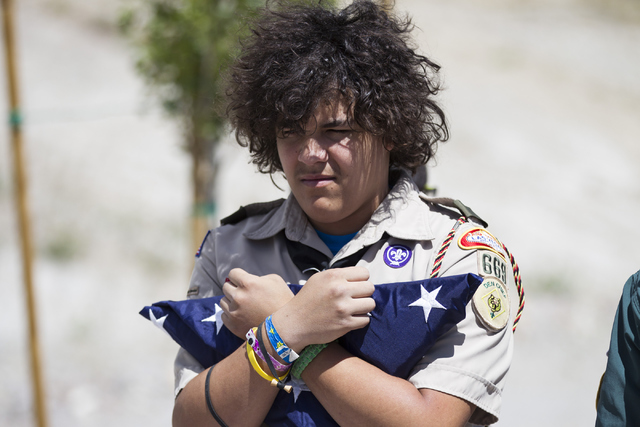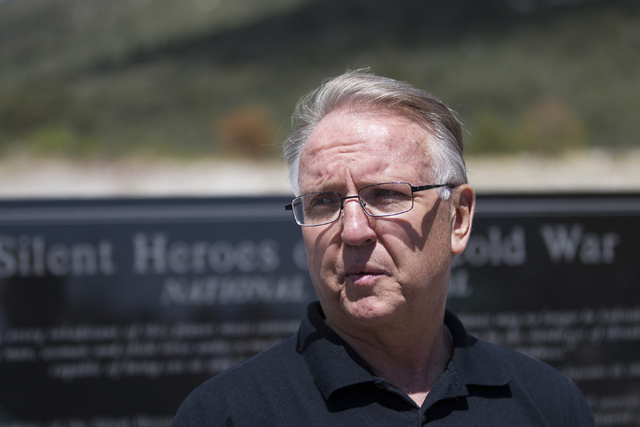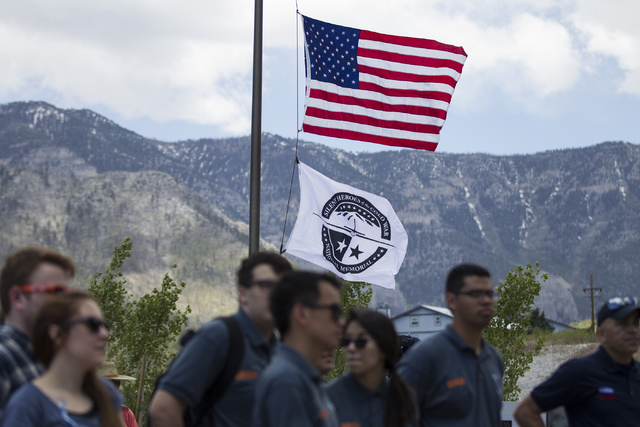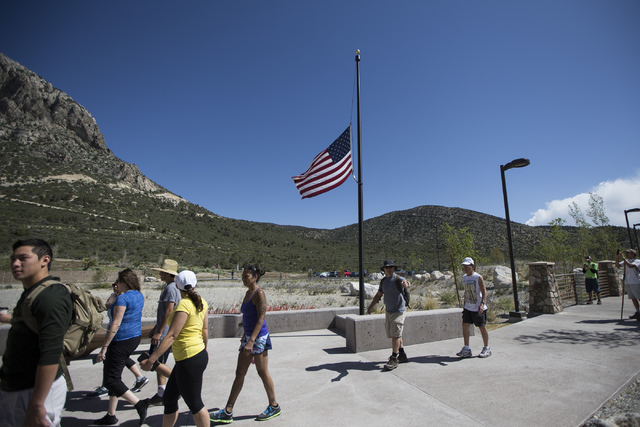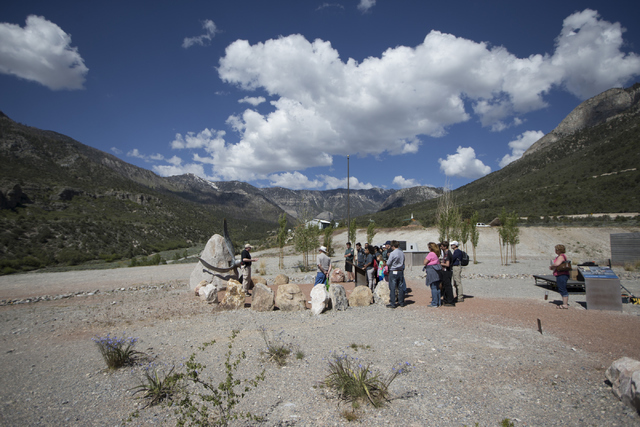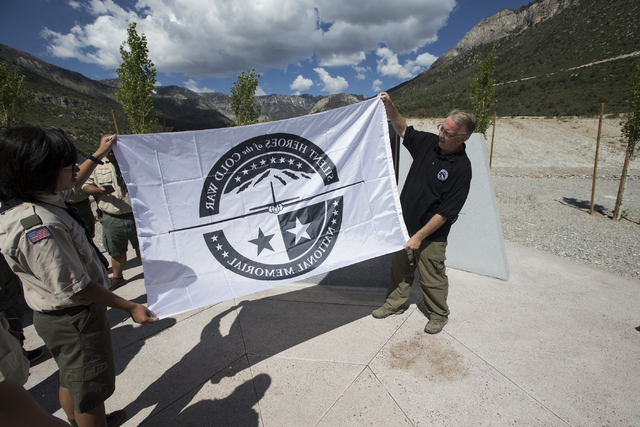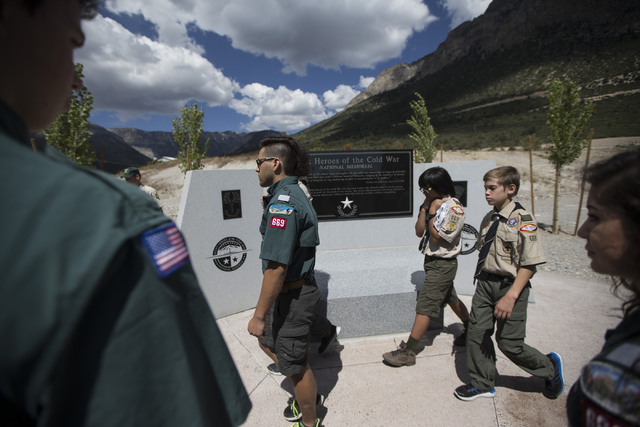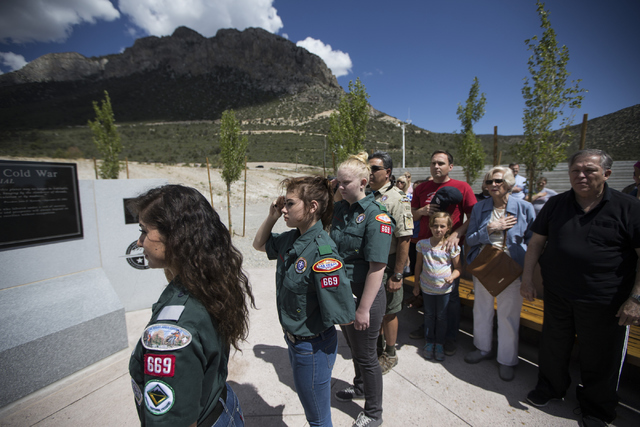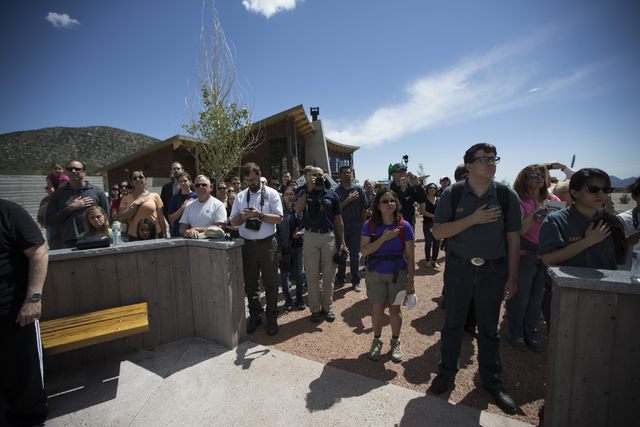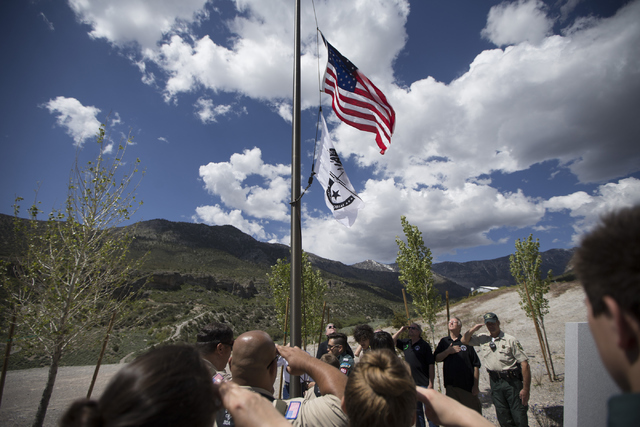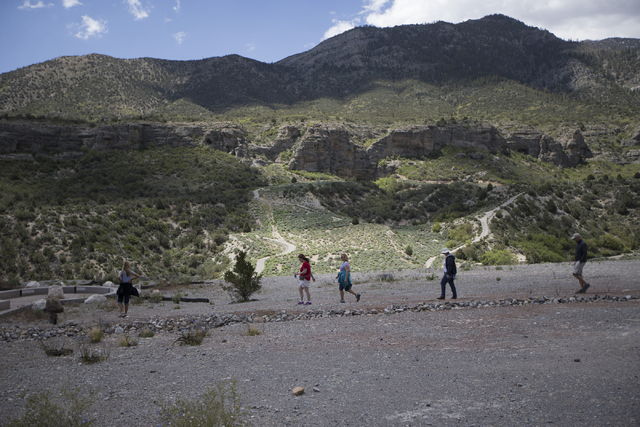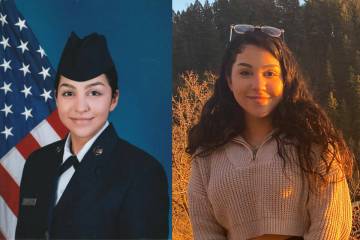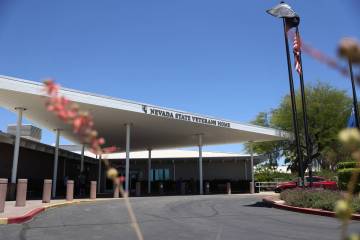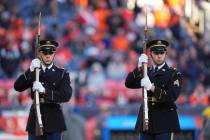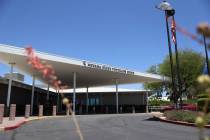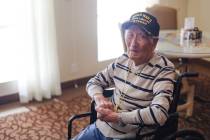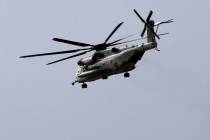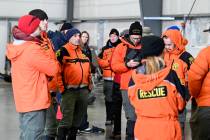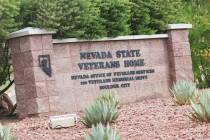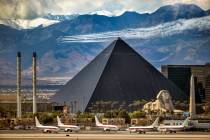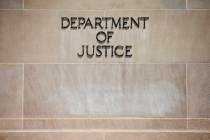Mount Charleston memorial service honors fallen Cold War heroes
They had no public funeral procession with people lining the streets to pay respects to passing hearses bearing war heroes. No public statements came from military commanders or other leaders thanking them for their sacrifice.
Yet they died on Nov. 17, 1955, when a C-54 Air Force transport plane crashed at Mount Charleston, killing all 14 men aboard — members of the Air Force and Central Intelligence Agency among them — while on a classified mission to Area 51 that demanded secrecy in the decades after the deaths.
Nearly 61 years later, the silence is ending.
On Monday, it came to this: The Silent Heroes of the Cold War National Memorial held its first Memorial Day ceremony at the Spring Mountains Visitor Gateway, not far from the mountain where the 14 died. Here, the story — once classified information — was recounted. Indeed, it’s a memorial not just for the 14, but for thousands of others who died. They died not in the jungles of Vietnam or on Normandy Beach — but in service during the Cold War, a battle waged for decades with spies and covert intelligence-gathering.
“Today is to honor the men and women who never came home,” said Steve Ririe, a member of the memorial’s committee who started researching the plane crash in 1998.
“We want you to share,” he told the scores of visitors who came at the start of the daylong event, which featured memorial tours. At the start of the day, members of Boy Scout Troop 669 of North Las Vegas served as the color guard. They raised the American flag to the pole’s top, then lowered it to half-staff.
The plane, which flew from Burbank, Calif., was blown off course in a snowstorm, hitting a ridge near the top of the nearly 12,000-foot mountain. Because of the secrecy of the mission, the crew had to fly under radio silence. The group, which included engineers and scientists, was heading to Area 51 to test to the U-2 spy plane.
Memorial Day is about sacrifices like those made on Mount Charleston in 1955, Ririe said.
“It’s not about playing at the lake, and it’s not about firing up your barbecue,” he said.
Ririe, a Boy Scout leader, wanted to discover the story of what happened after he hiked to the crash site in 1998.
He obtained records through the Freedom of Information Act, including an accident report the CIA declassified in 1998. He later went to the crash site in 2001 and retrieved the plan’s propeller, which is at the memorial site. Beneath the memorial’s cap is a 5-foot vault, which is sealed and has personal items and parts from the aircraft.
In his presentation, Ririe reminded the audience that the heros of the Cold War era faced the challenge of keeping the nation from perishing in a nuclear war.
“Had they not been successful, we might not be here today,” he said.
As part of the 14-year project, family members were contacted. Sen. Harry Reid, D-Nev., supported legislation for the national monument, which was dedicated last year.
“The families of the decedents didn’t know what the mission was until 1998,” said Chris Hays, a member of the committee that worked on the memorial.
Ken Walther, a retired CIA agent, said the memorial is a fitting tribute that recognizes people who lost their lives in covert service to the United States and teaches the history of the Cold War.
A member of the memorial’s committee, Walther said he would like to see efforts expand in the long term to recognize those Cold War sacrifices, possibly with a museum.
“That’s what I want to do, be more inclusive of all people who served in the Cold War in a covert manner,” said Walther, who retired in 1996 after a 27-year career.
Asked what those who died may have wanted people to know about their service, he smiled.
“Probably not much,” he said. “But this is a good thing.”
Contact Ben Botkin at bbotkin@reviewjournal.com or 702-387-2904. Find him on Twitter: @BenBotkin1



